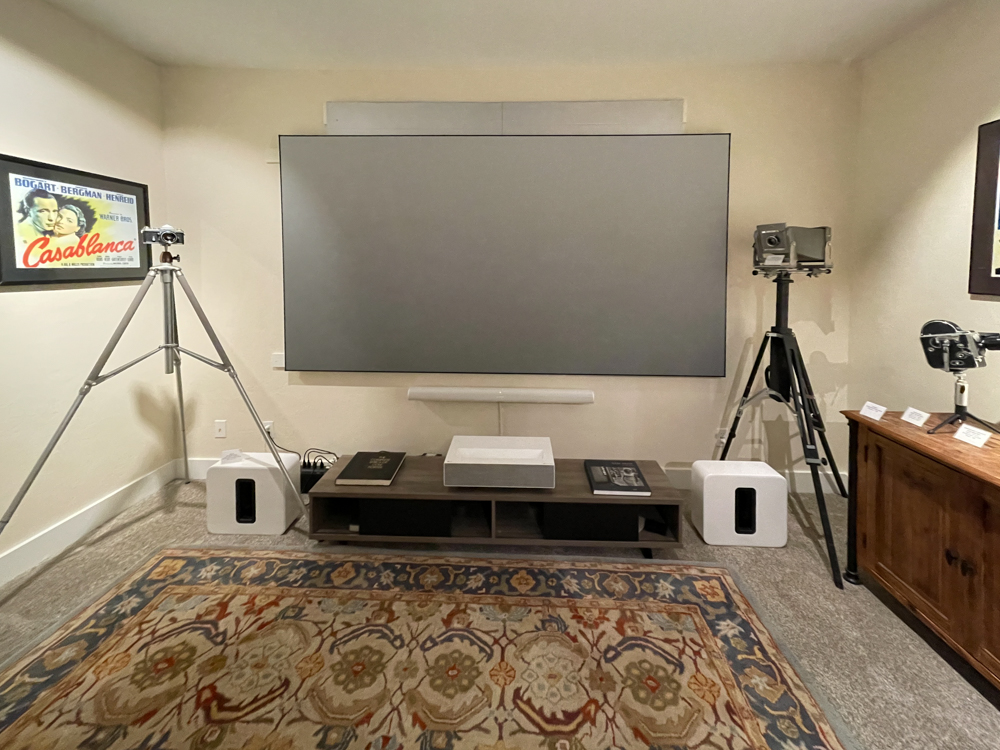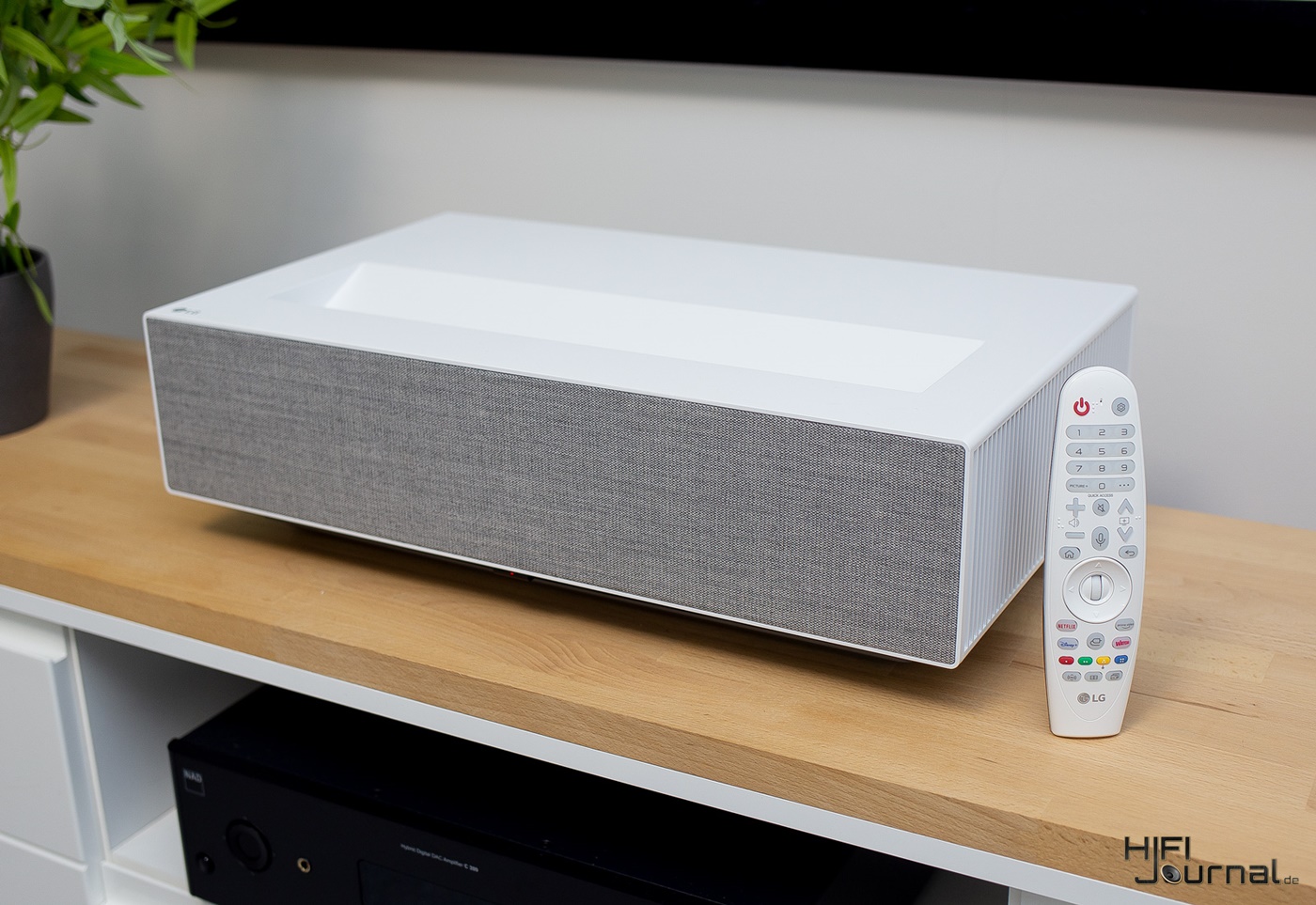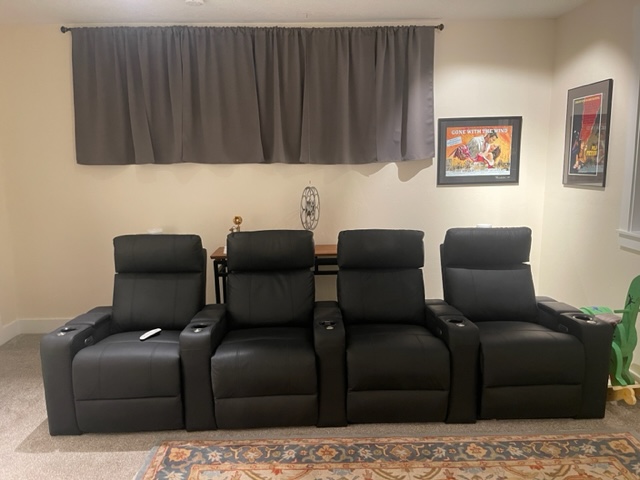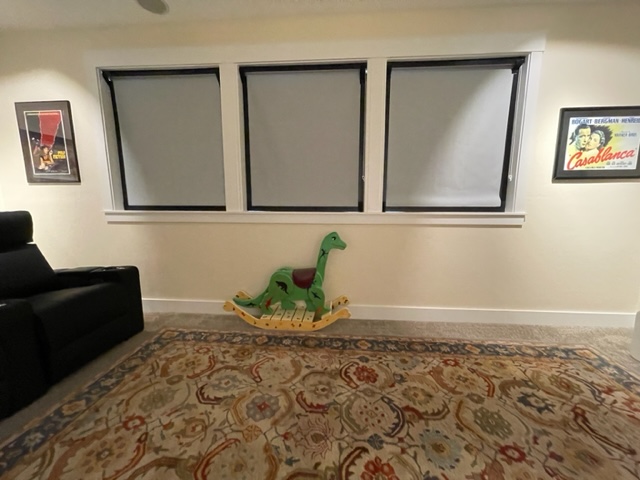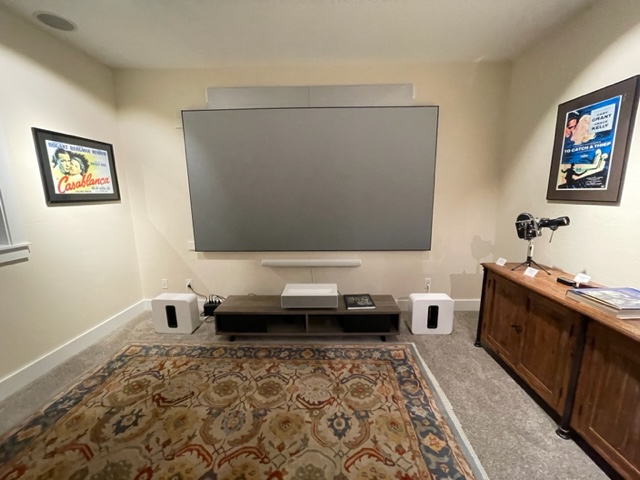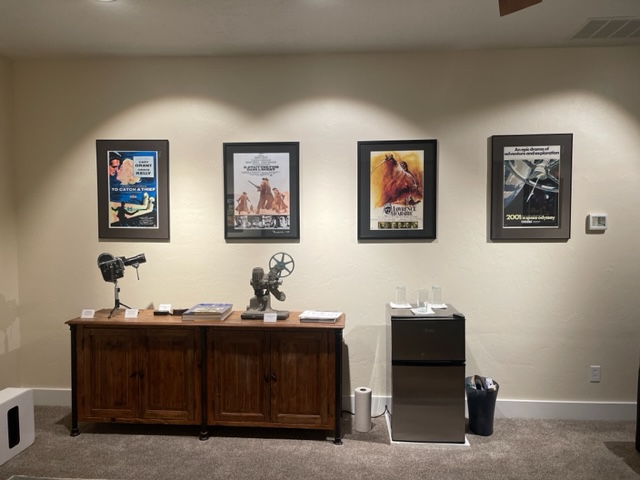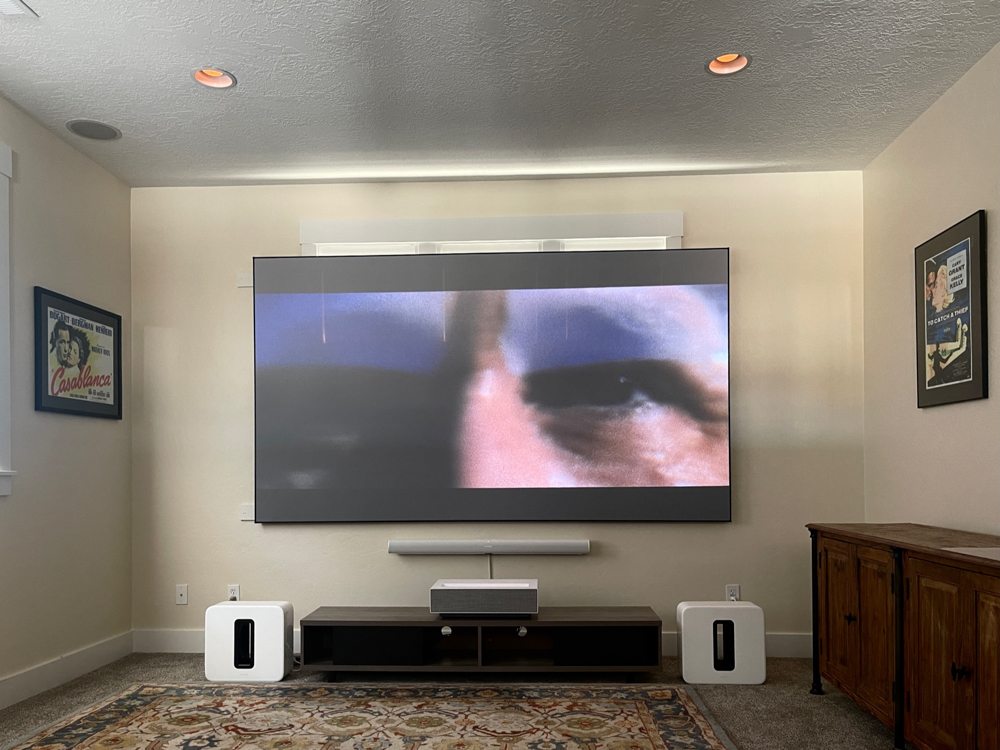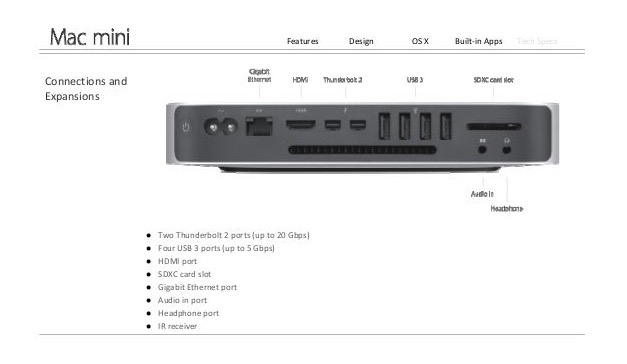For a huge image in the home theater. And huge sound to match.
Ultra short throw projectors have been around for a few years now and it’s probably fair to say that they are ready for prime time. I have been following the technology for quite a while and prices have been falling with quality rising, as is usually the case with new technologies. Now an UST projector capable of projecting a 120 inch diagonal image at 4K quality is affordable. I bought the LG CineBeam HU715QW which can be found for under $2,300, along with an Aeon ALR 123″ Elite Screen for a further $1,600. This screen is designed for use with UST projectors only and will provide a reasonably contrasty image with the room lights on.
A UST projector sits very close to the screen, some 12″ distant, projecting up at an extreme angle with optics and software providing the required keystone correction. This obviates the need for ceiling mounting and the related wiring complications. The Ambient Light Reflecting screen is coated with millions of triangular prisms, the upper surface parallel to the ceiling to reject ceiling light and the lower facet at some 45 degrees to accept and reflect the steeply upward pointed projected video.
Two words of caution. Do not chintz and use a white painted wall. The result will be ghastly. And be sure to install the projector and screen exactly in accordance with the manufacturer’s directions. You really do not want to correct for distortion using the projector’s built-in capabilities as any change from ‘dead square to the screen’ will degrade image quality. And UST projectors like the LG do not have zoom lenses, so your screen:projector distance has to be exact, meaning 1/16″ accurate. To get that right I used these two laser tools:
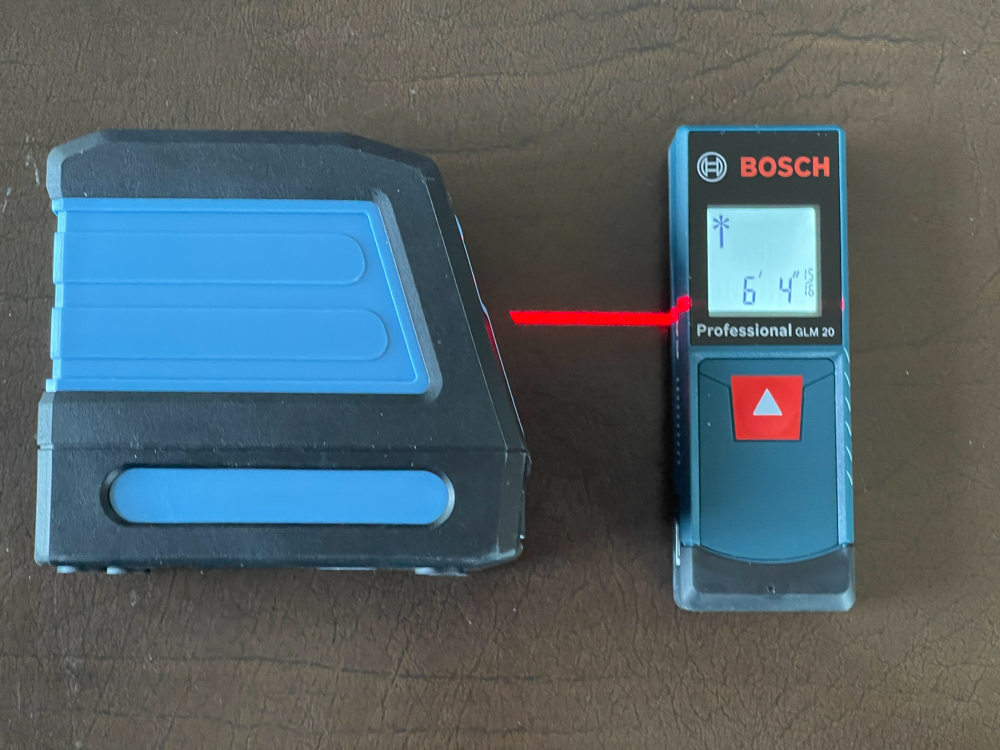
A laser level and a laser ruler. The latter is accurate to 1/16″.
While screen frame assembly is easy, stretching the fragile material and attaching it with the 108 (!) included springs is non-trivial, and on no account should greasy fingers contact the screen’s surface. Elite Screen provides a generous amount of sheet material to make sure this is the case, along with the spring stretcher hooks and two pairs of cotton gloves.
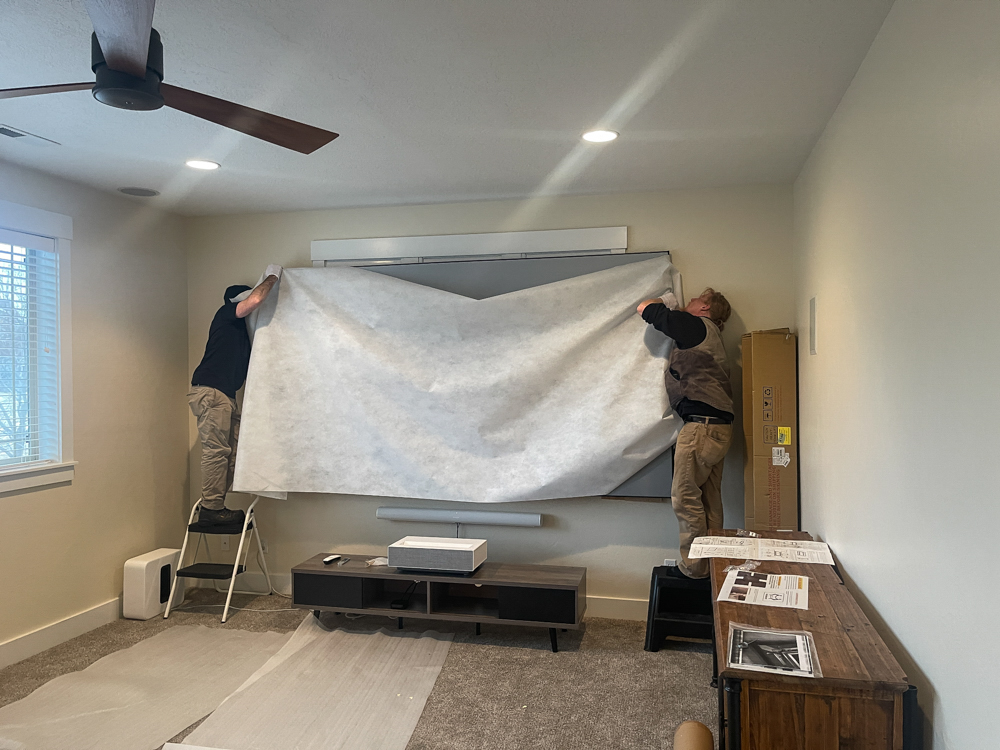
The installers mount the screen on the wall after stretching the fragile material onto the frame.
The sound system can be whatever you want. I used a Sonos Arc + Sub + two SL rear speakers, all wireless, for ease of installation and a high quality sound stage. You can easily pay four times more but I’m strictly an ’80/20′ man. Spend 20% of the maximum possible and get 80% of the quality.
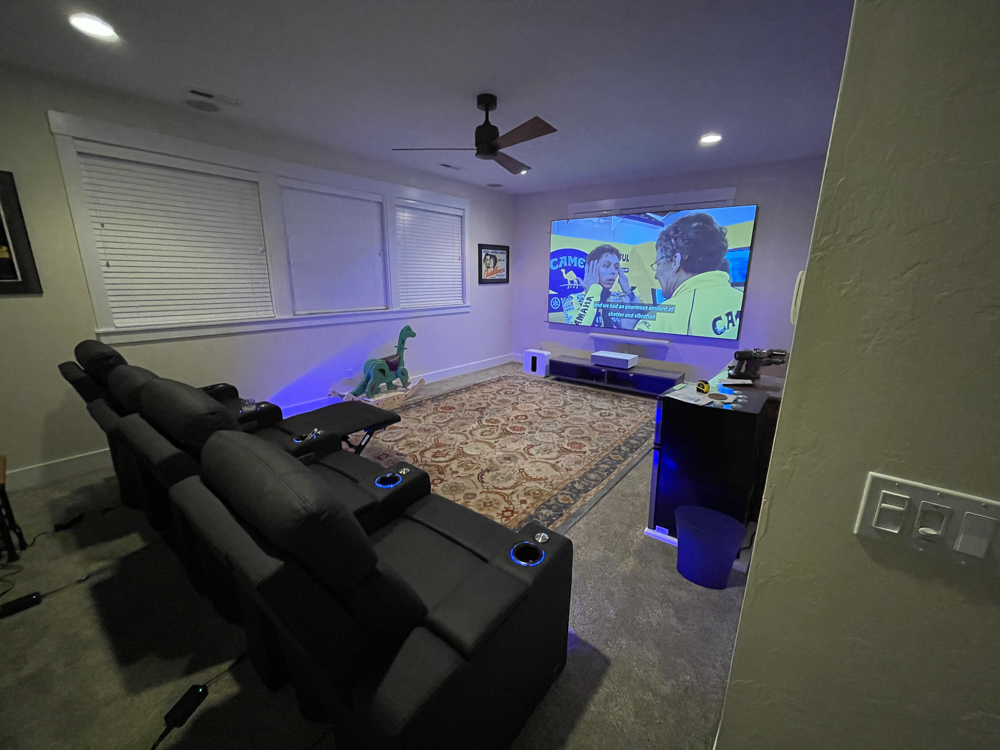
The completed home theater.
The image quality is outstanding, provided care is taken to follow the manufacturers’ instructions for screen and projector. Are the blacks as black as those from an OLED LED TV? No. Is the experience more immersive? Immeasurably so. And don’t forget a small, silent refrigerator for ice cream and soft drinks.
My previous HT installation was in 2006 and used an Optoma overhead 480i projector and a 100″ screen. Quality was really good for the day and age, but the current UST setup has a 44% larger screen and sixteen times the definition. What’s not to like?
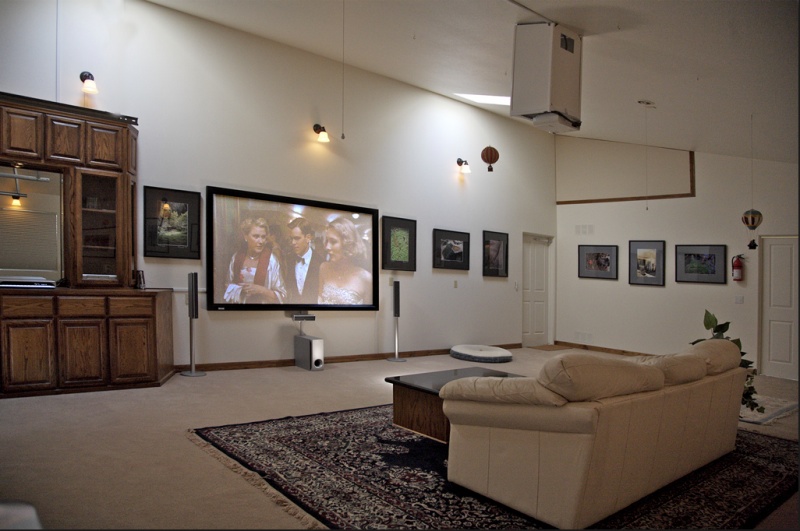
The 2006 installation used an overhead 480i projector.
Low sound volume from the Sonos Arc sound bar:
When first installed and even with the Sonos S2 app set to maximum volume, I was getting inadequate volume from the Sonos Arc sound bar on streaming movies through the AppleTV 4K using both Netflix and HBO. A check of the Sonos bulletin/chat board disclosed this is a common complaint with many throwing their hands up, blaming Sonos and deciding to sell the hardware.
Wrong. There are projector/Sonos conflicts at work here.
A careful reading of the LG projector’s manual disclosed a myriad of sound adjustments, one of which is mentioned in a rather low key manner on page 66/116 of the large manual, thus:
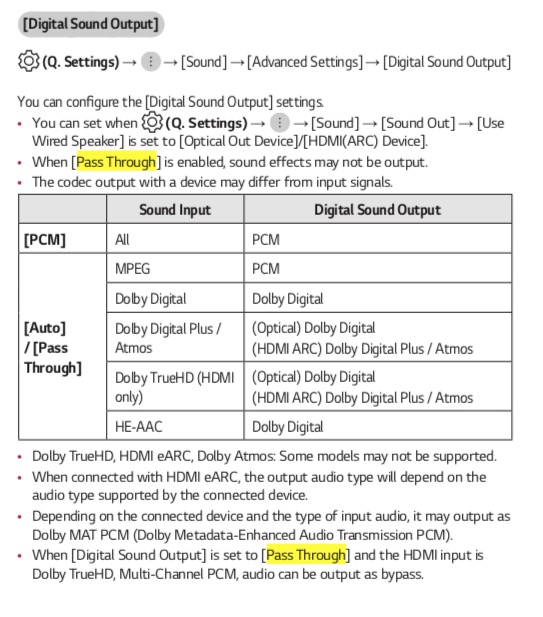
‘Pass Through’ barely merits a mention, but is a key setting with Sonos.
Simply stated, until ‘Pass Through’ is enabled (you do not want the setting to be ‘Auto’) on the LG projector, the projector overrides the Sonos’s sound controls and limits the maximum volume. Apparently this is also common with large screen LG and Samsung TVs. Enable ‘Pass Through’ and now the Sonos system will rattle your windows and burst your ear drums on anything much above 75% in the Sonos S2 app. I can think of no finer way to enjoy Hans Zimmer’s pulsating score or the glorious sound of the V12 Rolls Royce Merlin Spitfire engine in Christopher Nolan’s Dunkirk. That costly Sonos Sub really earns its keep here.
Room tuning:
By the way, Sonos comes with a ‘Trueplay’ option which, when triggered, broadcasts a series of sounds over 60 seconds while you walk around the room waving your iPhone this way and that. This tunes the Sonos system to your environment and who am I to argue? It sounds just great after this strange procedure. And non-iPhone users need not apply as this only works with iPhones. Apple should buy Sonos and add something special to their mediocre selection of sound devices. Maybe ‘It Just Works’ is not quite right with Sonos, but it’s close.
